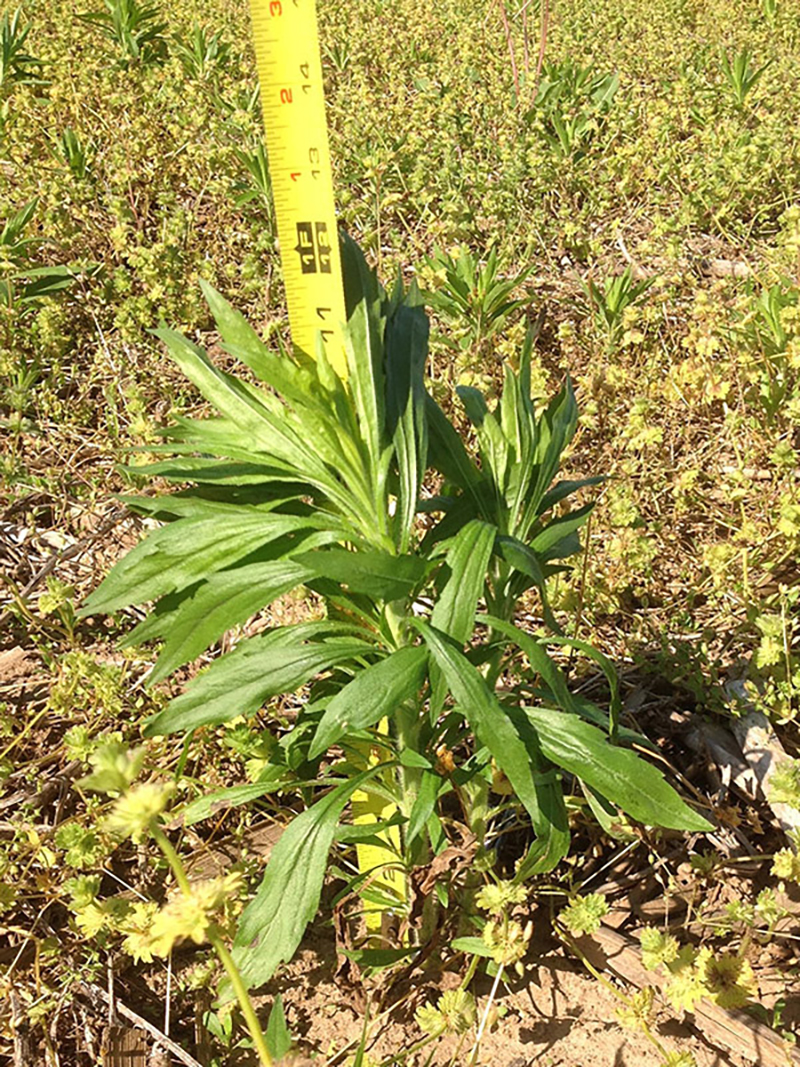Picture of the Week
February 22, 2021
Fall Emerging Marestail: The lurking pest in your no-till soybean field
Marcelo Zimmer, Weed Science Program Specialist, Purdue University
The months of November and December 2020 felt more like spring than the winter months we would expect in Indiana. The temperatures remained in the 40's and 50's and the majority of precipitation events were rain in most areas of the state. Now winter has officially arrived in January with multiple snow events and seasonably cold temps. Many of the inquisitive like to ask weed scientist "What does this winters' weather mean for weeds this next year?" While you would think we would have a quick definite answer, it is hard to predict what will happen this next year. One characteristic that makes a plant a weed is their plastic growth or adaptability to a range of environments. This being said, often odd weather conditions tend to mess with our minds more than it does weed growth. The only thing I can promise anybody for this upcoming growing season is: There will be weeds that will need to be managed! So here is what I think may happen this next spring.
The warm fall and first half of winter has certainly given an advantage to marestail as plants likely continued to emerge into the late fall and even into December. If there was a year to apply fall herbicides this was it, as crops came off early and the weather held for several weeks following harvest. Marestail continued to emerge and grow before the winter weather arrived in January. The marestail plants that survive the winter will likely thrive in the early spring as the ground thaws and things begin to green up. This will allow for these plants to grow and reach uncontrollable sizes by late spring when planting activities begin in Indiana. This leads to my prediction that no-till fields that did not receive a fall burndown may have high populations of large bolting marestail plants at planting if not controlled by an effective early spring burndown.
Click image to enlarge
Those who did not make a fall burndown are encouraged to get into fields as soon as possible this spring to burndown marestail plants while they remain small. A simple mixture of glyphosate plus 2,4-D and/or Dicamba or Sharpen will suffice. If a producer chooses they can add in a low rate of a residual herbicide to help prevent further emergence, although they should always plan to make another pass before planting to put down a full residual and clean up any remaining marestail plants.
See the latest edition of the marestail fact sheet from Purdue and Ohio State weed science that outlines marestail control in no-till soybean (https://u.osu.edu/osuweeds/files/2019/04/2019-marestail-fact-10czipq.pdf).



